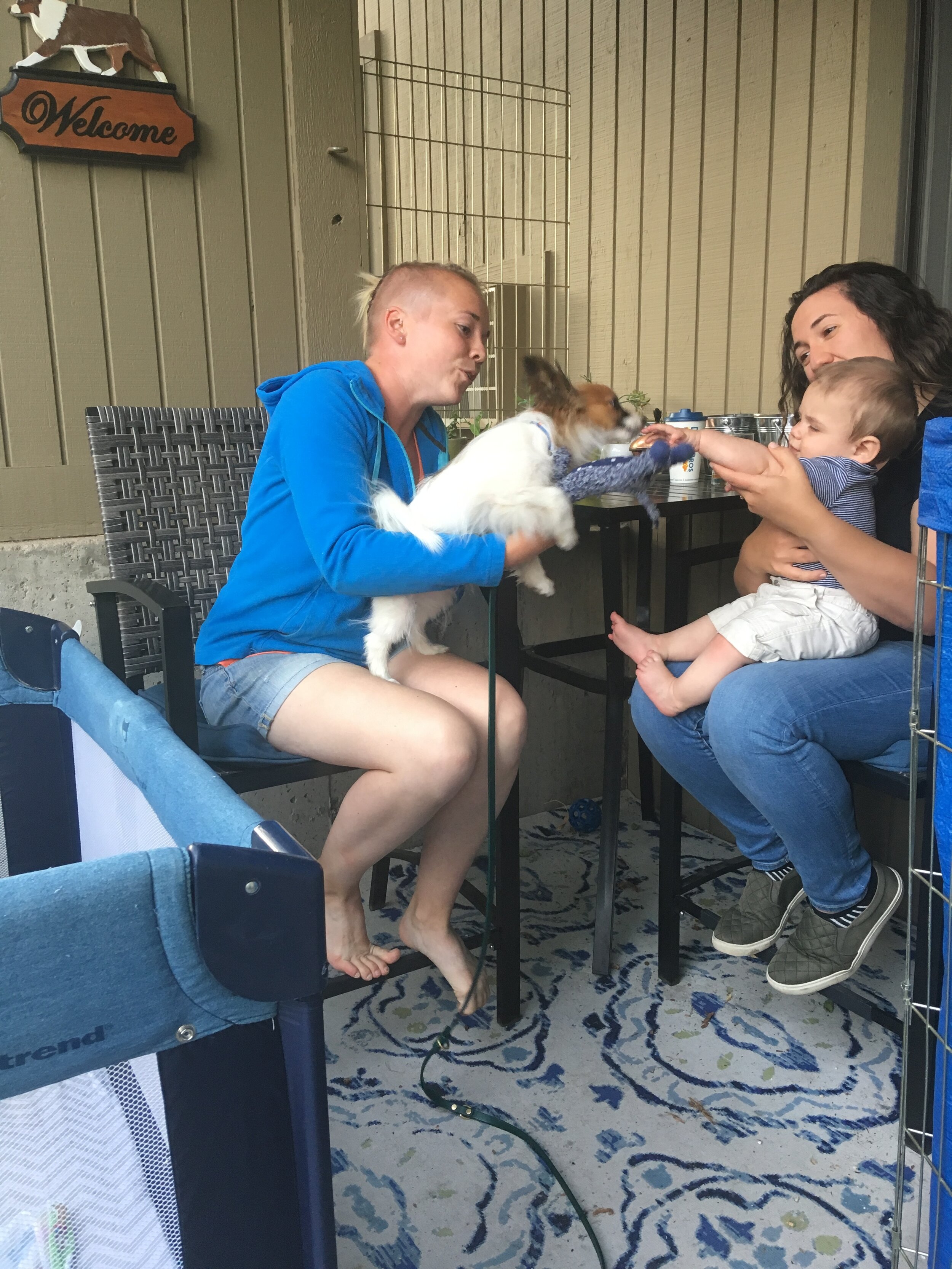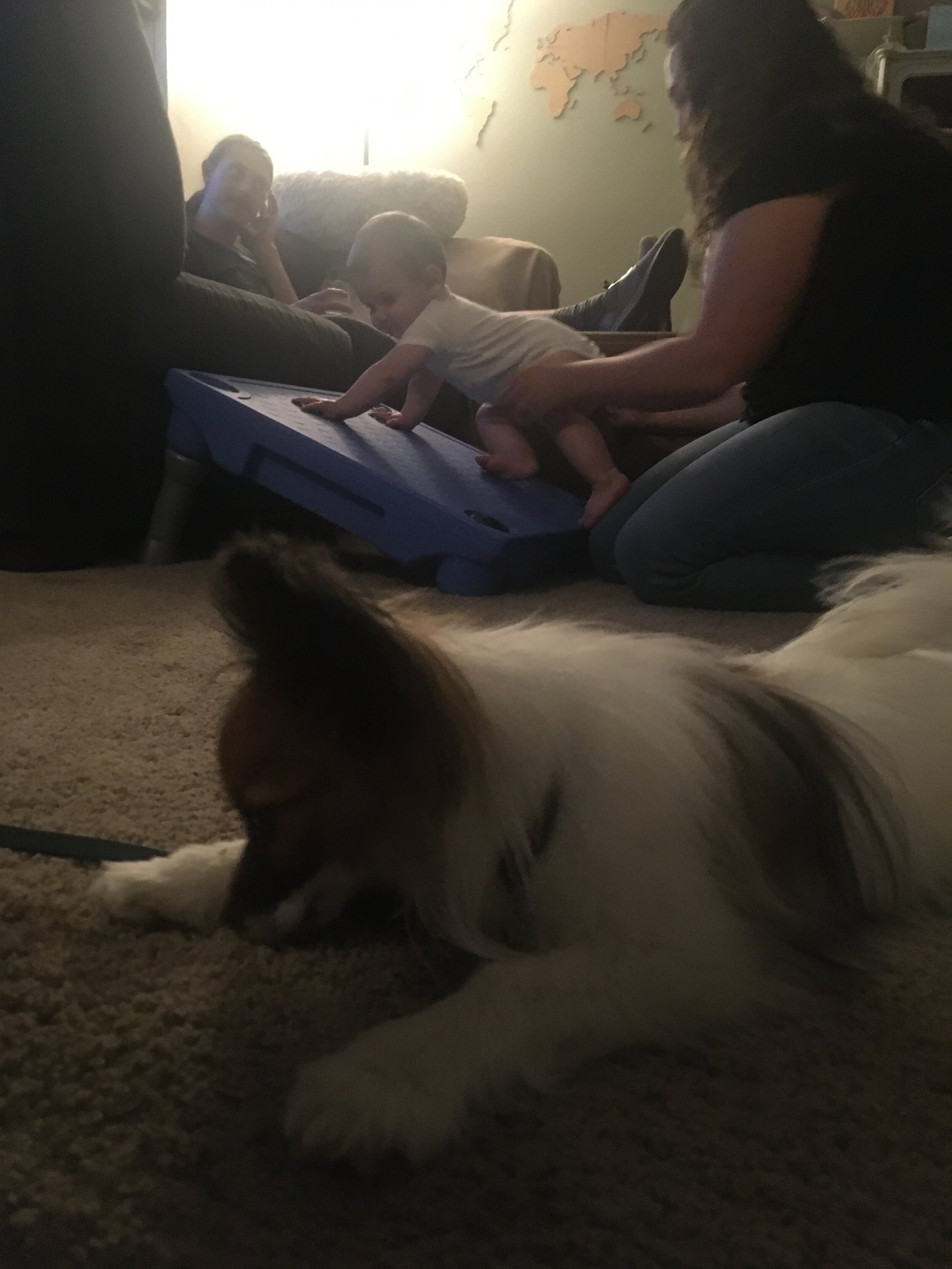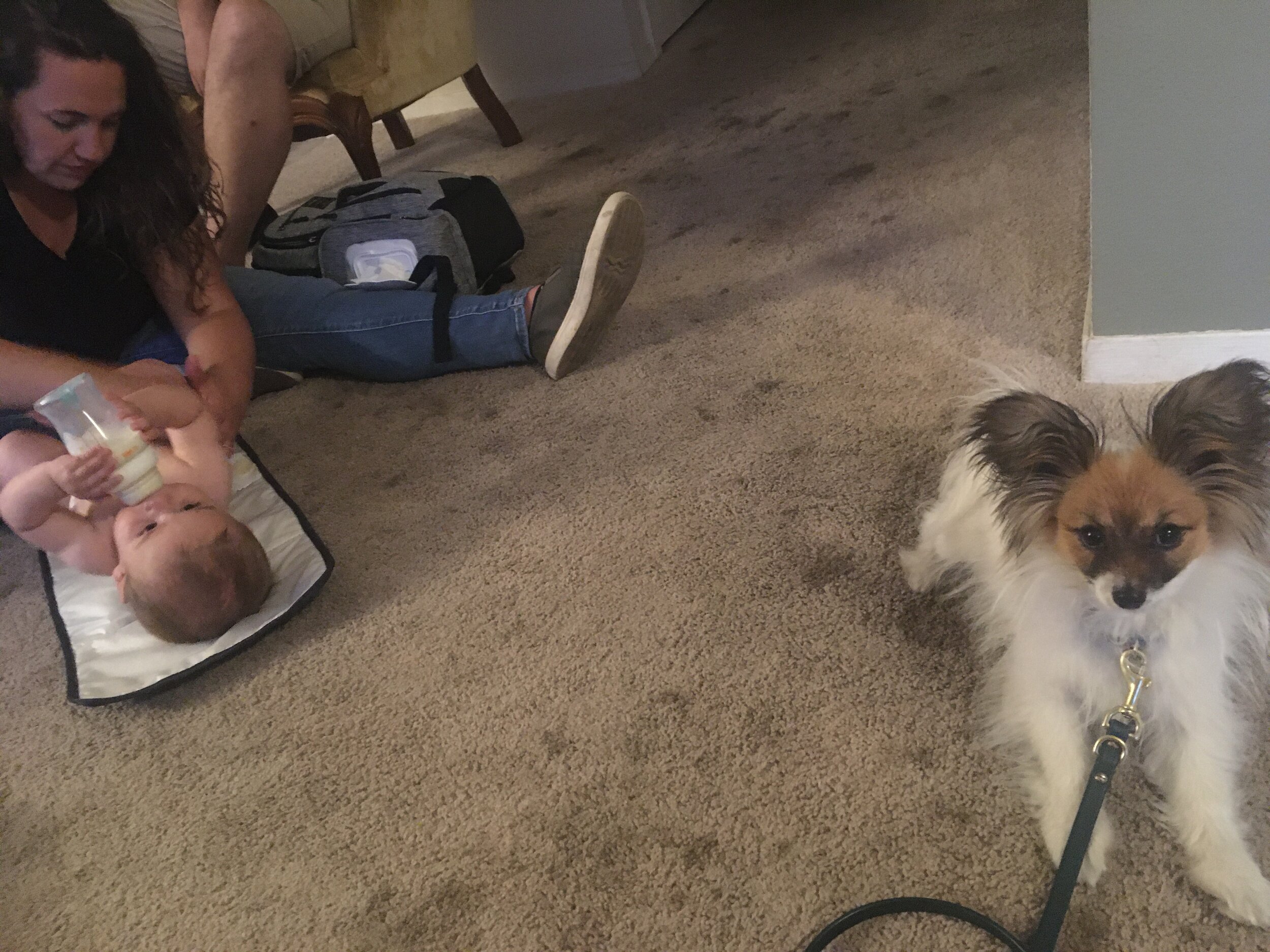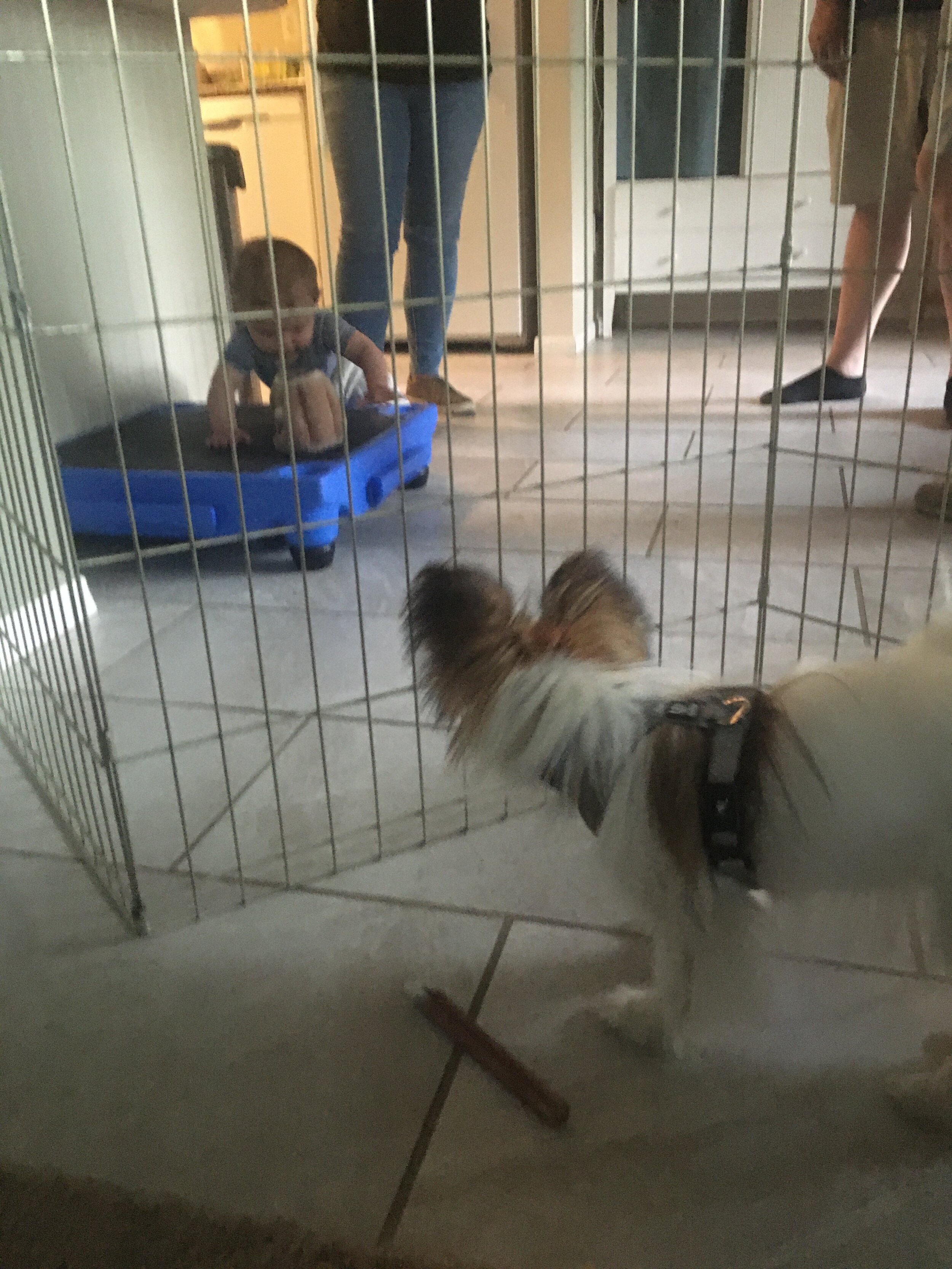Puppies & human babies are both so adorable, why not put them together and get a double dose of cuteness?
Lots of reasons, actually!
The puppy default mode is to nibble, lick, grab & tug, bounce, scratch, and generally act like baby sharks.
Toddlers . . . pretty much do the same!
Between the two of them in a toddler-puppy combo, there is a lot of potential for winding each other up (toddler squeal can easily produce a puppy frenzy and vice versa!) and practicing not-so-great play behaviors.
So how do we foster good, calm, gentle, pleasant, happy, relaxed, peaceful, and harmonious interactions between our new puppies and their small human friends?
Management.
This is the biggest, most important piece of a successful toddler + puppy relationship. Without it, you are setting up both toddler and puppy for a lot of frustration with each other, with potentially longer-lasting consequences. Don’t go down that road. If you are preparing to bring home a puppy to your household with a toddler, or just introduce your puppy to small children outside of your immediate family, save yourself a lot of stress by planning your management strategies ahead of time.
I recently had the chance to introduce Jamie to my godson, Jack. Jack is almost 9 months old, and loves dogs. He lives with an older dog who is very gentle and tolerant, but Jamie at almost 6 months of age was a different experience for him!
We utilized several different management strategies to help both Jack and Jamie enjoy their visit together.
Playpen for Jack – Jamie got to come and check Jack out at his pace, without risk of Jack grabbing for Jamie’s soft ears or Jamie nibbling on Jack’s small fingers.
Baby-gate divider when Jack was on the floor – Jamie could check out Jack crawling around from a safe distance.
Leash for Jamie – When Jack was crawling in closer proximity, Jamie really wanted to go play a kissy (bitey) face game with him. Jamie on a leash got to practice his offered down behavior and engage/disengage game instead.
Jamie on Couch, Jack on Floor – At one point, Jamie was happily chewing a bone on the couch while Jack played nearby on the Klimb platform that we use as a ramp up to the couch. I made sure that there was plenty of space between Jamie with his bone and Jack’s play area, so that Jamie wouldn’t feel like his resource was in jeopardy.
Lap Introductions – When we were ready to let Jamie & Jack do some closer interactions, we held both of them on laps so that we could easily control the interaction on both sides. Jack could decide if he wanted to interact with the puppy without Jamie jumping on him, and Jamie could decide if he wanted to interact with the toddler without Jack grabbing him. Jack reached his hand out to Jamie, and Jamie leaned forward to give it some lovely licks. I had a toy nearby to direct Jamie to grab if he got a little more interested in using his mouth instead of his tongue to play with Jack’s fingers.
Nap Times in Crate (& Playpen) – Both boys took several naps during their visits, Jamie in his crate and Jack in his playpen. Quality of interactions is better than Quantity, and both Jamie and Jack did much better for having some recovery time completely separate in their safe areas.
Can you spot the management we are using in each of these photos?





Training.
In addition to management, there are some training skills that you can start with for both the puppy and the toddler! The puppy has to learn how it is appropriate to interact with a young human, within the limits of its ability as a puppy. The toddler has to learn how it is appropriate to interact with a dog, within their limits as a young human. Both pieces of this education are important, and again remember – you are dealing with two babies here, not just one. So until you are well on your way down your training plan with both the child and the puppy, you will NEED management in your routine. Don’t forget that essential piece.
Training for the puppy – Here are a few skills that I find helpful for puppy to know to help them make good decisions about their behavior around a toddler. Remember, the puppy’s ability to do these things will depend on their age and development (and whether they have learned that these behaviors pay off!).
Offered Down Behavior – Jamie knows that offering a down behavior is a good, calm way to ask for things or get rewarded from me. Check out this video to get started with this behavior.
Engage/Disengage (Look at That) Concept – Jamie knows that he gets rewarded from me for looking at exciting things and then turning away. Check out this video to get started with this behavior.
Training for the toddler – The toddler’s ability to do this will depend on their age and development.
Touch Gently Instead of Grab – Model this behavior. You can hold the child’s hand as they reach towards the pup and help them keep their fingers relaxed. Label it (such as “touch gently”), and remind & redirect the child to this behavior. Praise them when they get it right! If they can’t touch gently yet, go back to management strategies above.
Remember, QUALITY over QUANTITY should be your mantra. Start with just a few minutes (or even just a few seconds) of quality interactions under the management conditions above, then separate the puppy and toddler completely to give them both a break. Build up slowly, and practice your training skills to help both the child and the puppy know how they should be interacting with each other.
For puppies and older children, there are some additional training & management strategies that can be used to help everyone have a safe and fun time. Stay tuned for additional blog posts on that topic in the future!

